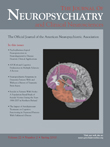Delirium-Induced Charles Bonnet Syndrome
To the Editor: In 1760, Charles Bonnet, a Swiss naturalist and philosopher, described vivid, complex visual hallucinations occurring in otherwise psychologically normal people. 1 , 2 Bonnet’s own grandfather, who suffered from blindness due to severe cataract disease, experienced colorful, vivid hallucinations of people, birds, and buildings but never accepted them as real. 1 , 2 This condition, which affected Bonnet himself when he developed visual impairment, is called Charles Bonnet syndrome. 1 , 2
Charles Bonnet syndrome can be described as visual hallucinations of the blind. 3 – 6 It is characterized by complex visual hallucinations occurring in the context of ocular pathology causing visual impairment. 1 – 6 The most common causes include macular degeneration, diabetic retinopathy and glaucoma. 3 – 6 The elderly seem to be affected more often, and the condition shows a slight propensity toward females. 2
The hallucinations generally include clear, colorful, often Lilliputian images of people, animals, and inanimate objects and can last for hours. 1 – 6 They generally occur in the evening or at night and usually with the eyes open. Most patients are not generally distressed by them and demonstrate full insight. Patients are often able to suppress their hallucinations by closing their eyes or utilizing rapid eye movements from one target to another, particularly away from the affected visual field. Reassurance to patients is also an effective treatment and often may be all that is required. 1 – 6
We report the case of a patient with bilateral blindness from diabetic retinopathy who began experiencing vivid complex visual hallucinations after the onset of delirium due to an infection-induced diabetic ketoacidosis. Upon treatment of his infection and normalization of his blood glucose, the patient’s delirium resolved, but his visual hallucinations continued to persist.
Case Report
A 50-year-old, divorced, Caucasian man with a history of type 1 diabetes mellitus, end-stage renal disease, status post renal transplant, and diabetic retinopathy with bilateral blindness was admitted to the hospital for diabetic ketoacidosis secondary to a urinary tract infection. In the emergency department, labs were obtained and revealed an elevated blood glucose at 892 with a sodium at 118 most likely secondary to the hyperglycemia. His WBC count was normal. His urinalysis demonstrated slightly hazy pale yellow urine with 1+ leukocytes, occult blood, and was positive for nitrites. His urine culture grew >100,000 colonies/ml of staphylococci. He was placed on an insulin drip and aggressively hydrated with IV fluids. He was admitted for treatment of his hyperglycemia and urinary tract infection and was started on IV vancomycin.
Forty-eight hours after his admission, the patient became confused and reported vivid complex visual hallucinations. He saw people sitting and standing around him, always eating some type of food. The people were silent and wearing brightly colored clothing consisting of red, green, and yellow fabrics. The patient always saw them during the daytime when he was awake. He was aware that these images were not real but still found them disconcerting. His visual ability was limited to discerning light and dark with limited acuity. The patient was placed on risperidone by his medical team to treat his presumed new-onset psychosis. His confusional state resolved, but his complex visual hallucinations persisted. Upon assuring the patient that his hallucinations were not real, he was aware but not concerned with them.
A full cognitive exam was performed and was found to be normal. The risperidone was discontinued, and the patient denied any other symptoms of psychosis. His delirium resolved with the normalization of his blood glucose levels and treatment of his urinary tract infection. His visual hallucinations continued to persist, however, for the remainder of his hospital stay and after his eventual transfer to an assisted living facility 1 week later.
Discussion
While the current diagnostic criteria for Charles Bonnet syndrome remains controversial, most patients exhibit visual system pathology, have an understanding that their visual hallucinations are not real, and do not present with other psychiatric disorders such as delirium, schizophrenia, or substance abuse. No effective pharmacologic treatment has been identified. 7 Interestingly, our patient’s Charles Bonnet syndrome was triggered by his delirium. It continued to persist after his delirium resolved and did not respond to antipsychotic treatment. Our patient developed legal blindness 10 months prior due to diabetic retinopathy, and this was his first instance of visual hallucinations. A literature search of OVID yielded no reports of delirium-induced Charles Bonnet syndrome. Given the risks of atypical antipsychotic drugs in aging patients, it is important to recognize that these medications do not benefit patients with Charles Bonnet syndrome. 8 Reassurance to our patient was important and provided optimal relief of the anxiety brought on by his hallucinations.
1. Terao T, Collinson S: Charles Bonnet syndrome and dementia. Lancet 2000; 355:2168Google Scholar
2. Mocellin R, Walterfang M, Velakoulis D: Neuropsychiatry of complex visual hallucinations. Aust N Z J Psychiatry 2006; 40:742–751Google Scholar
3. Manford M, Andermann F: Complex visual hallucinations: clinical and neurobiological insights. Brain 1998; 121:1819–1840Google Scholar
4. Teunisse RJ, Cruysberg JR, Hoefnagels WH, et al: Visual hallucinations in psychologically normal people: Charles Bonnet’s syndrome. Lancet 1996; 347:794–797Google Scholar
5. Schultz G, Melzack R: The Charles Bonnet syndrome: ‘phantom visual images.’ Perception 1991; 20:809–825Google Scholar
6. Schultz G, Needham W, Taylor R, et al: Properties of complex hallucinations associated with deficits in vision. Perception 1996; 25:715–726Google Scholar
7. Menon G, Rahman I, Menon S, et al: Complex visual hallucinations in the visually impaired: the Charles Bonnet Syndrome. Surv Opthalmol 2003; 48:58–72Google Scholar
8. Schneider LS, Dagerman KS, Insel MS: Risk of death with atypical antipsychotic drug treatment for dementia: meta-analysis of randomized placebo-controlled trials. JAMA 205; 294:1934–1943Google Scholar



